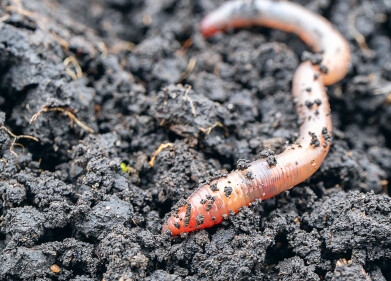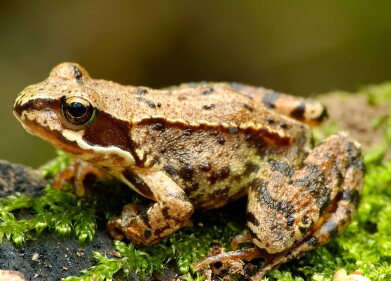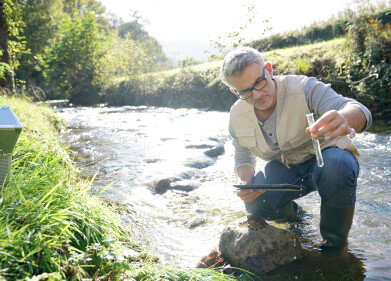Soil Testing
What is the Great Green Wall of Africa?
Sep 12 2024
The Great Green Wall (GGW) of Africa is one of the continent's most ambitious environmental initiatives, aimed at combating desertification and restoring degraded land across the Sahel region. This massive reforestation and land restoration effort stretches across the width of Africa, from Senegal in the west to Djibouti in the east. Envisioned as an 8,000-kilometer-long natural barrier, the project is designed to halt the encroachment of the Sahara Desert and provide ecological, economic, and social benefits to millions of people living in the region.
The idea for the Great Green Wall dates back to the 1970s, when desertification in the Sahel became a serious threat to livelihoods, food security, and the environment. Population growth, unsustainable farming practices, and climate change contributed to the degradation of vast swathes of land that had once supported millions of people. By the 1980s, the concept of planting a "green wall" of trees to stop the spread of the Sahara began to take shape, and in 2007, the African Union officially launched the Great Green Wall initiative.
The primary goal of the GGW is to restore 100 million hectares of land by 2030, sequestering 250 million tons of carbon in the process. The project also aims to create 10 million green jobs, improve food security, and enhance resilience to climate change across 11 participating countries, including Senegal, Niger, Nigeria, Ethiopia, and Mali.
Despite its ambitious goals, the progress of the Great Green Wall has been mixed. As of 2023, only 18 million hectares of land—about 18% of the target—had been restored, with significant achievements in countries like Senegal, Ethiopia, and Nigeria. Senegal alone has planted over 11 million trees, while Ethiopia has restored millions of hectares of land. These efforts have not only rejuvenated the landscape but also brought increased food production, job opportunities, and environmental resilience to many communities.
However, the initiative faces considerable challenges. One of the main issues is funding: the project requires an estimated $33 billion by 2030, but only a fraction of that amount has been secured so far. Political instability in several Sahel countries and poor coordination among stakeholders have also slowed progress. Additionally, the sheer scale of the project means that effective monitoring and sustained commitment are essential for long-term success.
Where the Great Green Wall has made strides, the benefits have been significant. Restoring degraded land has improved soil fertility and water retention, allowing communities to engage in sustainable agriculture once again. This has helped to reduce food insecurity and improve the livelihoods of small-scale farmers. In addition to tree planting, the project promotes agroforestry, where trees are integrated with crops to improve biodiversity and soil health.
Furthermore, the GGW plays an important role in mitigating climate change. By sequestering carbon in the restored land, the project helps to reduce the overall carbon footprint of the region. This nature-based solution is critical in a region that is already highly vulnerable to climate change and its impacts, such as extreme droughts and shifting weather patterns.
Socially, the initiative has created thousands of jobs, especially in land restoration and agriculture, offering economic stability in a region where unemployment and poverty are prevalent. It has also reduced migration pressures, as many people who once left their homes due to land degradation and lack of opportunity are now able to remain and make a living from restored land.
Looking forward, the success of the Great Green Wall depends on several factors. Increased financial support, both from international donors and private investors, is critical. The launch of the Great Green Wall Accelerator in 2021, with pledges totaling $14.3 billion, has provided a boost, but much more is needed to meet the ambitious targets set for 2030.
There is also a growing push to incorporate new strategies that go beyond just planting trees. The GGW has evolved from a purely reforestation effort into a holistic program that includes sustainable land management, water conservation, and economic development. As more countries and stakeholders join the initiative, the project could become a model for other regions facing similar environmental challenges.
Digital Edition
AET 28.4 Oct/Nov 2024
November 2024
Gas Detection - Go from lagging to leading: why investment in gas detection makes sense Air Monitoring - Swirl and vortex meters will aid green hydrogen production - Beyond the Stack: Emi...
View all digital editions
Events
Jan 12 2025 Abu Dhabi, UAE
Jan 14 2025 Abu Dhabi, UAE
Jan 20 2025 San Diego, CA, USA
Carrefour des Gestions Locales de L'eau
Jan 22 2025 Rennes, France
Safety, Health & Wellbeing LIVE
Jan 22 2025 Manchester, UK



















